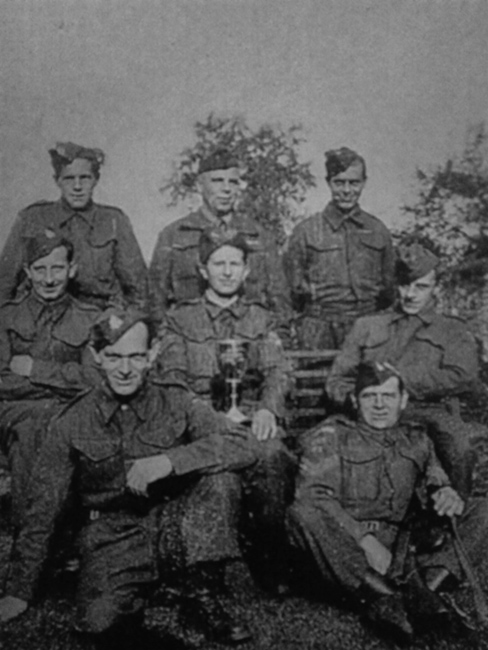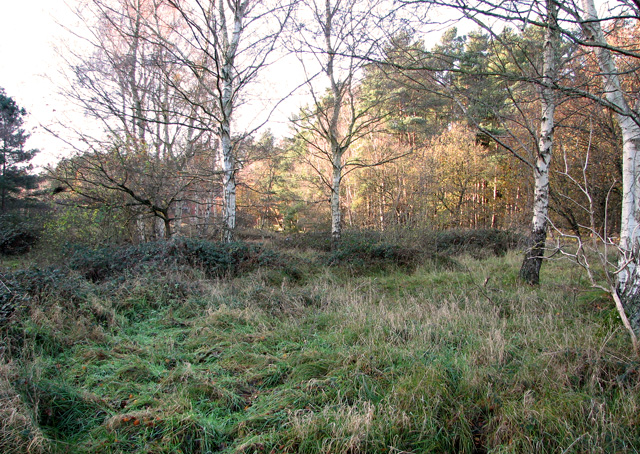The small town of Brandon lies on the edge of the Thetford Forest and straddles Norfolk and Suffolk.
| Name | Occupation | Posted from | Until |
|---|---|---|---|
| Sergeant Philip Russell Field | Wood machinist |
Unknown | 03 Dec 1944 |
| Lieutenant Eric George Field | Sawmill foreman |
Unknown | Unknown |
| Sergeant Charles Edward Holmes | Eastern counties representative for the Nollingham Coal Sales Association |
Unknown | Unknown |
| Corporal Samuel William Baker | Permanent way labourer - Railway |
Unknown | 03 Dec 1944 |
| Private Walter Cyril Blake | Forestry worker & farmer |
Unknown | 03 Dec 1944 |
| Private Roy Donald Budden | Garage owner - Motor & general engineer |
Unknown | 03 Dec 1944 |
| Private Albert Leonard Drewry | Stoker gas works |
Unknown | 03 Dec 1944 |
| Private George Alfred Eagle | Horseman on farm |
Unknown | 03 Dec 1944 |
| Private George Henry Holden | Agricultural labourer |
Unknown | 03 Dec 1944 |
| Private Donald Smith | Wood machinist |
Unknown | 03 Dec 1944 |
| Private J. William Stead | Unknown | 03 Dec 1944 |
The OB was situated on the edge of Lingheath, a scrubby heathland bordering on the Thetford Forest, about 90 metres distant from a dirt track and a piggery.
According to information published on the Brandon at War website, Brandon was chosen as the site an OB because it was thought that the invading German Army would rest up and regroup in the cover of the Thetford Forest.
The Patrol's first OB was built in July/August 1940. It was located in Forestry Plantation and large enough to provide room for 15 Patrol members.
Due to problems with flooding a second OB had to be built. It is described as having contained 8 bunks.
The OB is described as having been a 12 foot underground structure that was reached by clearing brush from the ground and opening a trapdoor to the bunker. Trees were cut down and used for the rafters, corrugated iron laid for the roof and earth covered over with a final layer of leaves and pine cones to disguise the underground base. There was an air vent that ran up alongside a tree. The Patrol had a primus stove for cooking.
An Observation Post was constructed on the edge of Lingheath along the Bury Road. (Info: Steve Woods)
We were taken to the location by John Field, son of Patrol leader Sergeant Philip Field. Mr Field was taken to the site by his father, after the war, but was not allowed to access it. On returning to the site years later all that remained of it was a depression in the ground. Presumably it had collapsed. Going by Steve Woods’ description, the OB appears to have had a flat roof and was, in all probability, built by the Patrol members themselves.
Over the years the location has changed considerably: the piggery no longer insists; trees are now growing on the small area of former heath land, which is hemmed in by boarding kennels and two private dwellings to the north and east, and a substantial house to the west of it. In the 1940s, the nearest roads would have been Thetford Road (600 metres north) and Bury Road (550 meters west). The Patrol’s Observational Post is said to have been near Bury Road.
Our thanks go to Mr John Field for kindly taking us to the location and for letting us have a photograph depicting not only most of the Patrol members but also Group Commanding Officer Captain Walter Gentle. The photo is believed to have been taken on occasion of a competition (note Lieutenant Eric Field holding the cup they won). This is the Auxiliary Units, Norfolk Area Cup, which is now on display at the Parham Airfield Museum. Brandon were winners in 1941, with Walsingham the runners up.
Brandon Patrol
Local targets would have included the main railway through Brandon and Thetford Forest and roads and crossroads through Thetford Forest - a possible German regrouping point under the tree cover.
Large flat expanses of Breckland heathland around Brandon would have made an ideal landing area for parachutists. Also the Little Ouse River crossings.
RAF Lakenheath is nearby, as is Didlington Hall, which was the HQ of the 46th Army Group.
Some of the Patrol went to Coleshill House for specialist courses. They also trained locally around Thetford Forest and at Didlington Hall with the army.
Training was carried out every Sunday in the chalk pit on the Elveden to Bury St Edmunds road. Patrol members were taught by the regular army to prime and throw Mills bombs, about dismantling fuses and especially the seven second fuse; they were also taught how to wrap plastic explosive around rail tracks to cut 3 foot lengths of rail.
A second joint training day was carried out in November 1940 and participants were taught about tank sabotage, how to keep low, using the .38 revolver and how to track their target.
The Unit also went to the rifle range at Cawston in Norfolk with .303 packed in grease that had been stored since the previous World War.
An account by Les Bond on the Brandon at War website recalls a weekend exercise when his regular Home Guard unit was pitted against the “Home Guard Commandos” as they knew them. His section was in an old shop on the Thetford Road in Brandon, but the Aux Units men dropped a grenade down the chimney of the pot bellied stove to wipe them all out. The assumption is that this was a dummy grenade and not the real thing! Les joined the Home Guard on 29 Oct 1941 and he was in the Army by April 1943, so this exercise must have been between those dates.
The patrol photograph is as follows;
Rear L - R; Billy Stead, Captain Walter Gentle, Wally Blake
Middle L - R; Sergeant Phillip Field, Assistant Group Commander Lieutenant Eric Field, Roy Budden
Front L - R; George Eagle, Billy Baker
(Courtesy J R Field)
TNA ref WO199/3389
Hancock data held at B.R.A
Evelyn Simak and Adrian Pye
Gareath Evans
J R Field for the Patrol photograph.
Steve Woods, Brandon Country Park

